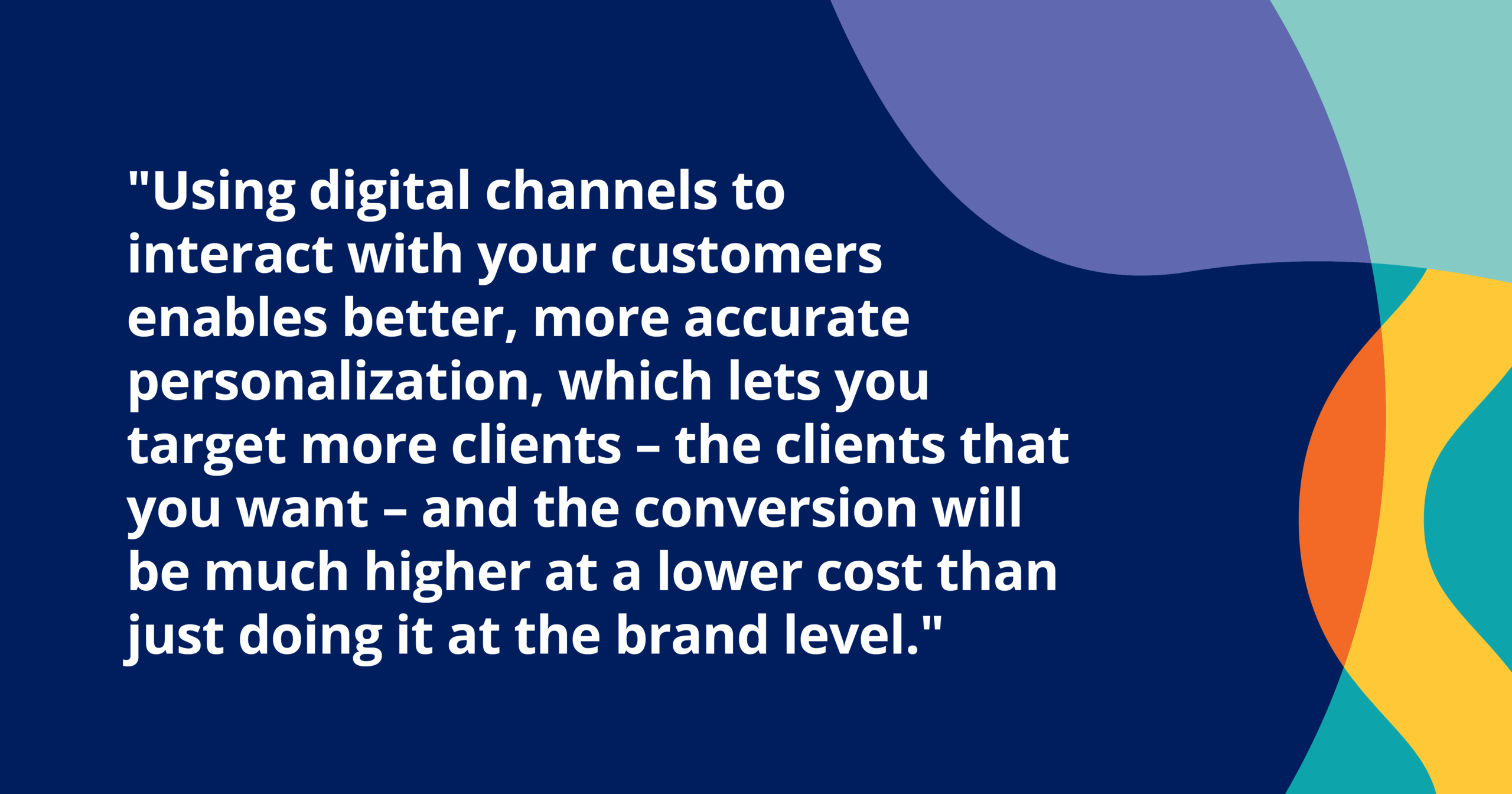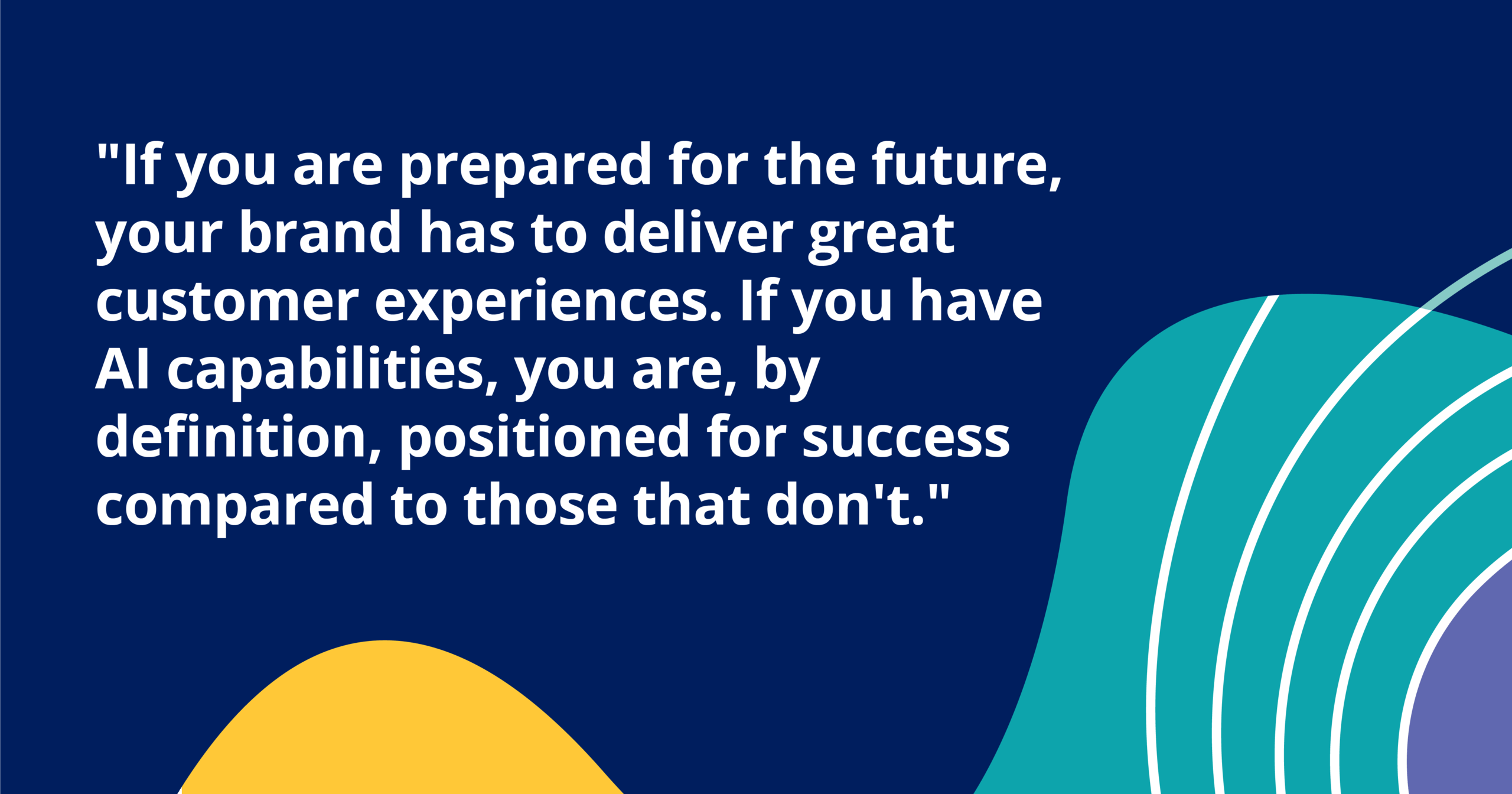De-regulation and the pressure from governments and customers alike on utility providers to demonstrate sustainability efforts makes utility markets outside of the U.S. hyper-competitive, and new entrants to the market continue to emerge. Concepts like supply and demand, and ability to store and refine drive price fluctuations in commodities like energy, creating a consistent pressure on utility vendors to differentiate themselves from their rivals through capabilities beyond competitive pricing. With limited influence on pricing, the key area to create competitive advantage is through seamless and empathetic customer experiences.
The most efficient and cost-effective way businesses can orchestrate these experiences is through digital transformation – upgrading from disconnected legacy marketing, sales, and customer service technologies to scalable solutions like machine learning and artificial intelligence. Historically, utility providers have tightly constrained budgets and complex, difficult to change legacy systems, making the evolution to a unified digital strategy across business functions a difficult one.
If digital evolution can propel them forward, how can they achieve it? What are the challenges they face? How has the pandemic impacted the future of this industry? We sat down with subject matter expert Wytse Kaastra, Managing Director at Accenture - Utilities - Energy Transition Europe, to discuss it, and here's what we found out.
Long-term success depends on real-time customer views through digital transformation
It's no secret that leveraging digital technologies to gain a better-than-360-degree view of customers is the future state for any organization that wants to deliver better, more connected customer experiences across all business functions. In some industries it's now table stakes, but utilities have complex challenges that are slowing their rate of modernization compared to other industries.
Commodified pricing is a hurdle and there are varying levels of digital competency – depending on the utility and the country, some are more advanced than others. Wytse illustrates, "It's a bit basic having a full view of the customer across the multiple channels. I think that's still for some utilities a challenge. Quality of service and price are the two key, competitive advantages for providers. Great customer service is the magic and having both is the holy grail that everybody tries to achieve. If you have a proper digital customer experience strategy and the execution, platform, and operations, you can channel many of your customer interactions through digital channels."
It's a long-term, cost-saving strategy, but it's also now what customers demand. Especially in a post-pandemic world where less in-person interaction has been mandatory. "Digital channels help drive down cost because they are just cheaper, more cost-effective than call centers or face-to-face interactions. But, as a customer, going through a portal or an app is preferred. I don't want to get into my car and go in-store; and the call center, honestly, can be sub-optimal." He goes on, "And of course it's never black and white. Organizations can still use face-to-face interaction in the high-value situations, whether it's complicated advisory or new products and services, but transactional interactions can move to digital channels."

Technology is just the first step in the shift
To make the leap, utilities providers need technology, people, and infrastructure to support it. Those can be tough investments to make on razor-thin margins, but they aren't alone. In our recent study of real-time decisioning, early tech adopters of artificial intelligence to improve customer experience revealed that "people issues" – defined as the culture and expertise to implement – were the biggest barrier to investment. While budget (22%) and technology (58%) were noted as challenges to implementation, "people issues" (78%) were by far the biggest hurdle to real-time adoption. Wytse echoes these findings, "The reality is, is of course, that there are some very good people in utilities that understand the end state picture. It's the execution that is extremely complicated. And typically, utilities don't have all the skills, people, talent, and capabilities in house to do it by themselves."
This is where he says that technology vendors and partners can help the most, "Working with suppliers that provide the tools and the platforms that have a lot of this intelligence baked in, is, of course, a great first step, but also the talent that comes with the suppliers, whether it's from companies like ours or yours or others, that deliver the smart engineering and the digital skills to get it implemented.”
Phased approaches can work in under-resourced organizations
Utility providers have challenges with antiquated systems and often don't have the budget to make out-of-the-box large transformations in one motion.
That doesn't mean they can't achieve their goals of modernizing, "Sometimes there isn't the option to make a big leap forward to run a big transformation program because it's time-intensive and, especially in Europe, many utilities are budget- and resource-constrained. These legacy architectures are quite monolithic – very big, integrated solutions. So the way to achieve the goal is to create digital decoupled modules where you replace decomposing parts first."
And that doesn't mean disconnected channels. It means upgrading your infrastructure in the areas of your business where you have the most to gain. Places where the business case is most advantageous for the organization. Wytse advises, "The utility should invest the money in the places where the business case is the most interesting, which most of the time, is customer experience and customer context. You can have pieces of the legacy – on-premise, old school, transactional systems – but innovate on the customer side, and then slowly you start to change and adapt your stack."
Full adoption of artificial intelligence at scale can propel businesses forward
While a phased approach will help utilities who are constrained move forward into the age of unified customer experiences, getting to the end state of a fully realized, seamless customer experience means the entire business needs to get on board with AI. Per Wytse, "Let's clarify. There is a difference between playing a bit with AI and deploying AI at scale to power your mission-critical capabilities. And I would argue that many are not there yet. I think many are still in the experimentation/proof of concept phase. And, honestly, it's great to learn but pointless from a business operations perspective, because it only starts to impact your business if you should deploy it at scale across your channels: marketing, sales, customer service, and your new products."
It also means adopting new ways of execution. For example, many organizations will need to accelerate away from legacy marketing techniques quickly in the wake of global regulatory changes around consumer data.

It's going to be a massive pivot in industries that aren't fully up to speed in today's market to try to make connections with consumers, especially those who are not well-versed in marketing technologies – AI can ease the friction associated with that transition, especially where investments have traditionally not been made. Per Wytse, "Using digital channels to interact with your customers enables better, more accurate personalization, which lets you target more clients – the clients that you want – and the conversion will be much higher at a lower cost than just doing it at the brand level. We're never going to get to the place where every organization will abandon campaign-based interaction, but the mix will move towards more AI-based, digital marketing and sales and fewer mass media; but the mix will change and is changing."
The time to move forward is now
The future is already here Wytse says, "If you are prepared for the future, your brand has to deliver great customer experiences. If you have AI capabilities, you are, by definition, positioned for success compared to those that don't. Those that are behind are positioned for failure. That doesn't mean that everybody who doesn't adapt will fail and that everybody who does will be successful. Just that those who have adopted are ahead of the game.”
The global pandemic accelerated trends that experts like Wytse have been advocating toward for years, and by and large, utility companies showed resilience in adapting to the new normal. But the key takeaway he says is that the world is changing, whether organizations choose to or not, and as we emerge into more stable market conditions, now is the time to do it.
"If we were in a world that was not changing, you could say, well, you know, let's wait five years, but right now, we are in the midst of this digital revolution. So we shouldn't wait too long. You need to reinvent yourself when the sun is shining. And there was a lot of rain and pressure during this last storm." He continues, "You need to fix the roof when it's dry outside. So when there is also enough management attention, enough capital, enough ability to take some time to run these transformation programs, you need to go for it: recruit the right people, engage with select departments – those are success factors."
Learn more:
- See how Con Edison reduced service costs while improving customer experiences.
- Discover how Pega helps you personalize engagement to build customer value.
- Find out how Pega Partners can help you achieve the outcomes you need – fast!
Pega for Energy & Utilities
Work smarter, faster, and simpler.
Pega Customer Decision Hub
Connect experiences across inbound, outbound, owned, and paid channels.

